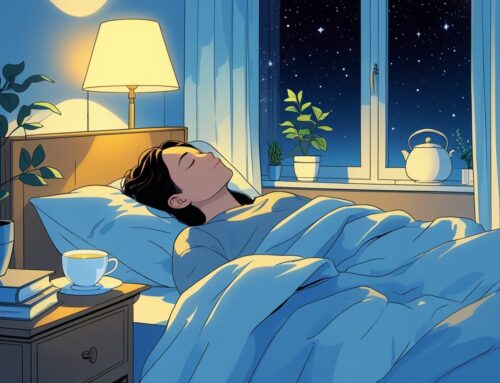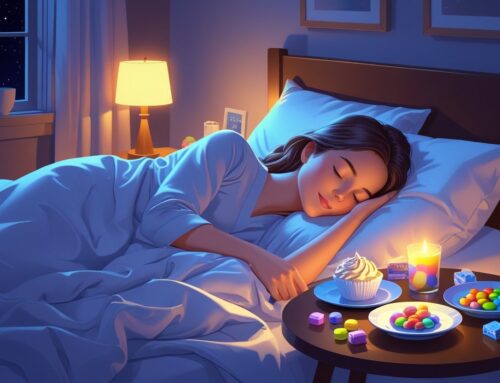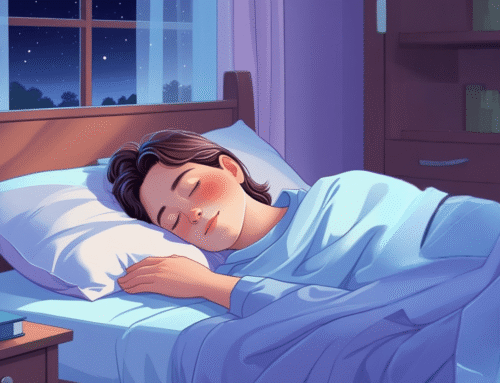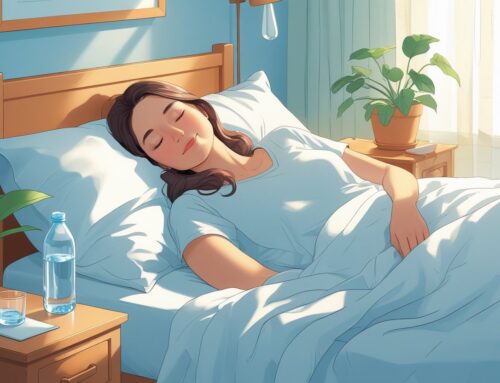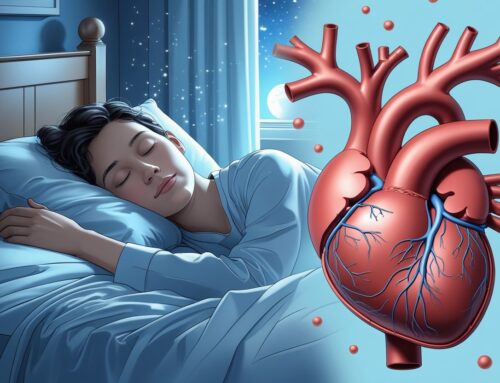Sleeping with hemorrhoids is painful and also disrupts sleep. Sleeping with a hemorrhoid should be done without pressure on the affected area by sleeping on your stomach or side and placing pillows against your hips for support. Both positions minimize pain and swelling and allow the body to relax.
In addition to changing position, taking a warm sitz bath at bedtime, wearing loose clothing, and the use of over-the-counter creams can help to reduce symptoms. Pain and discomfort relief at night enhances the quality of sleeping and facilitates healing.
An understanding of what is most beneficial for personal comfort is necessary as pain levels and preferred sleeping positions vary. Proper attention and adjustments can ensure better sleep in spite of hemorrhoid pain.
Key Takeaways
- Adjust sleeping position to reduce pressure and increase comfort.
- Use warm baths, loose clothes, and creams to reduce symptoms at night.
- Individual comfort varies, so try different methods to find what is best.
- A supportive and well-cushioned mattress helps relieve hemorrhoid pressure by promoting proper spinal alignment and allowing comfortable side or elevated back sleeping.
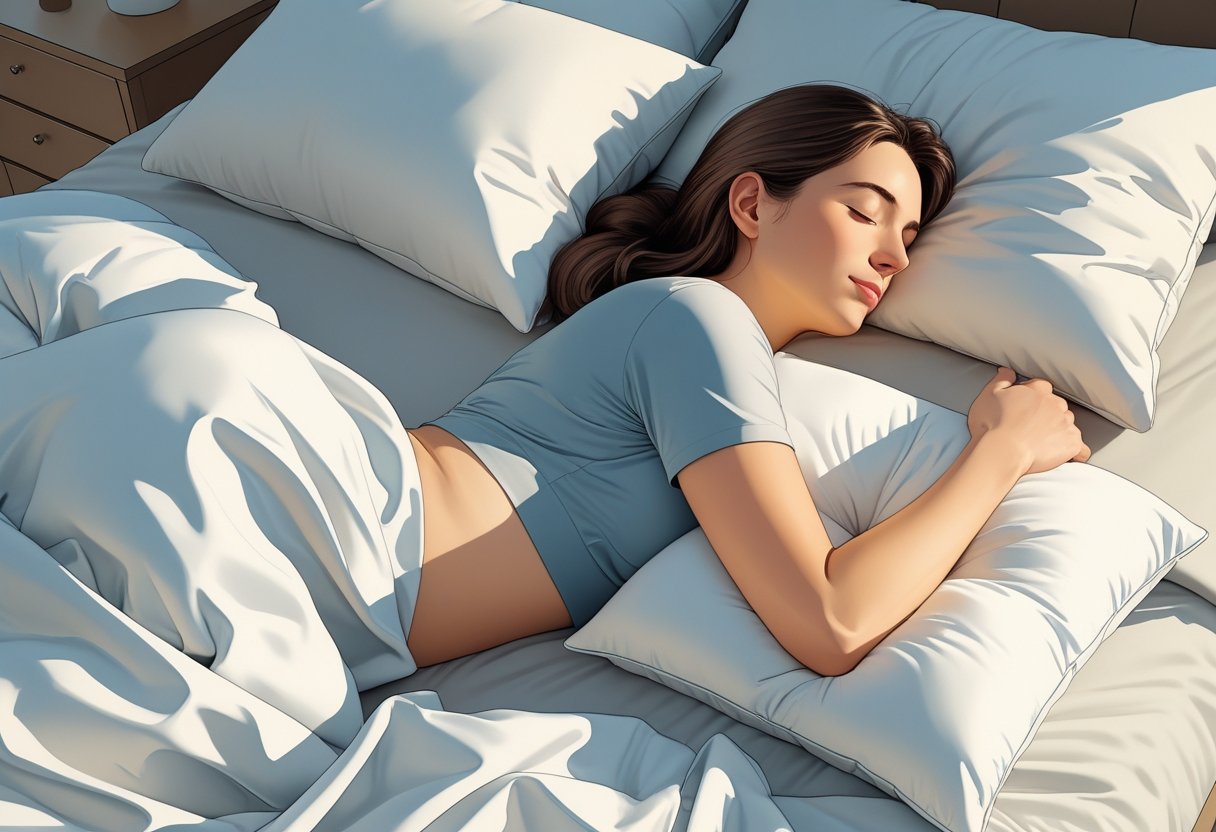
Understanding Hemorrhoid Pain at Night
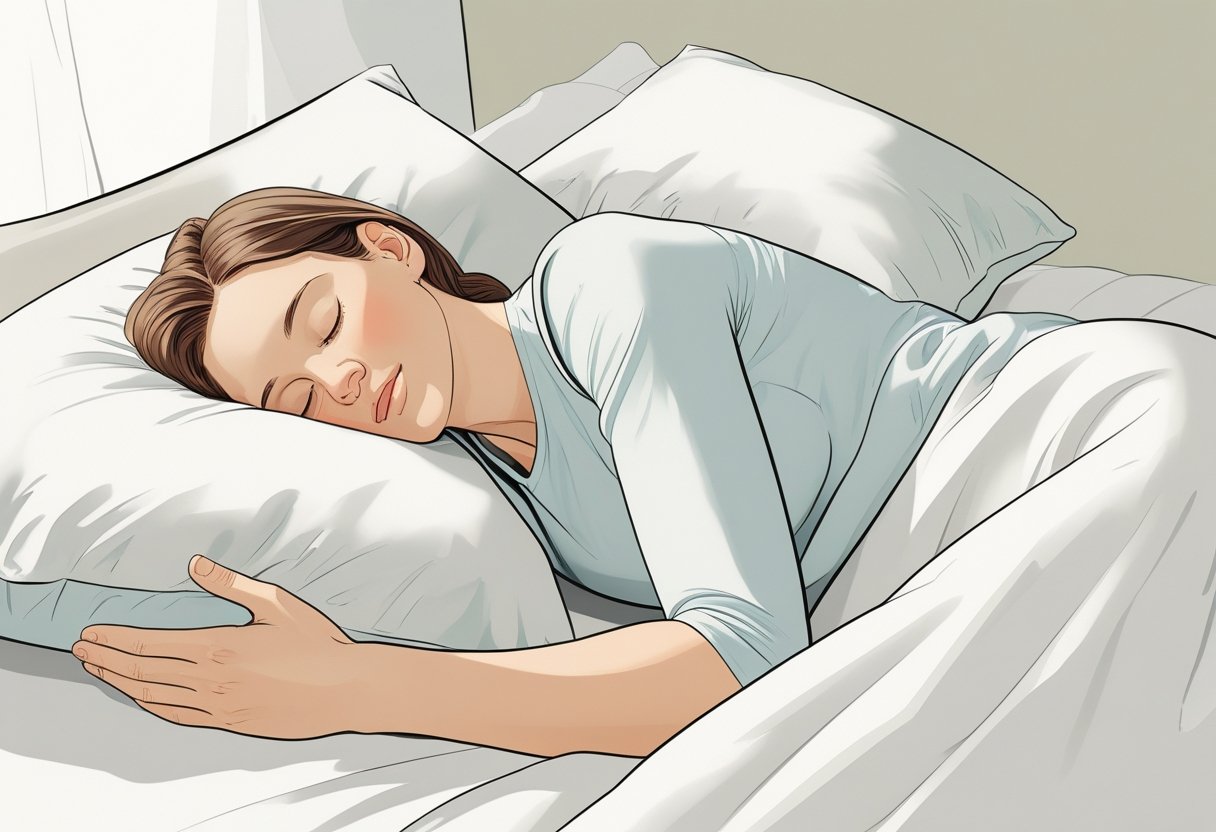
Hemorrhoid discomfort worsen at night as a result of body movement and shifts in blood pressure. The pain disrupts sleeping, and it becomes difficult to sleep and recover. Various hemorrhoid types result in different types of pain and discomfort. Identifying the differences makes it possible to discover the best possible sleeping positions with hemorrhoids and relieve the pain.
Why Hemorrhoids Can Disrupt Sleep
At night, lying down can increase blood flow to the lower rectum and anus. This swelling can put extra pressure on hemorrhoids, which makes pain and itching worse. Movement in bed also irritates sensitive veins, causing sharp or burning pain.
Discomfort restlessness can interrupt sleep cycles time and time again. Quality sleep loss impacts healing and overall comfort. Steer clear of positions that apply pressure to the affected area and pad with cushions to alleviate pain and allow for rest to be kept.
Symptoms That Worsen Overnight
Pain is the most frequent symptom that gets worse during the night. It can be sharp, throbbing, or burning in nature in the anal region. Itching and persistent need to get up and move also disrupt sleep.
Enlarged veins can bleed upon irritation, particularly upon passing stools or pressure caused by lying down. Overnight collection of moisture further increases the irritation and tenderness. These symptoms render falling and staying asleep challenging for most victims.
Internal vs External Hemorrhoids: Differences in Discomfort
Internal hemorrhoids develop within the rectum and tend to cause fewer pains but greater bleeding. They can be painful if they become swollen or prolapsing outside the anus while lying down.
External hemorrhoids form below the skin within the anal area. They are usually more painful because of numerous nerve endings present in this part. Thrombosed external hemorrhoids containing clotted blood result in extreme sharp pain and swelling.
Identification of internal or external hemorrhoids can help dictate useful relief measures and sleeping positions to provide comfort. For instance, the use of a donut pillow tends to minimize pressure on external hemorrhoids while sleeping.
Best Sleeping Positions for Hemorrhoid Relief
Choosing the correct sleeping position may minimize pressure on the anal region and alleviate hemorrhoid pain. Proper alignment and support while sleeping enhance comfort and can accelerate healing. Weight-bearing positions away from the affected area are most likely to succeed.
Side Sleeping With Support
Side sleeping, particularly left side sleeping, tends to be the most effective position to decrease pressure on hemorrhoids. It reduces pelvic pressure and enhances blood flow in the area around the anus.
Placing a pillow between the legs maintains the alignment of the hips and decreases pressure on the lower back and pelvis. Side sleeping decreases the amount of weight that is directly applied to the hemorrhoids, reducing pain.
Side sleeping also promotes improved air circulation around the anal region, particularly if loose, airy clothing is used. This can hinder irritation and enhance healing. For most, this is the most effective manner in which to lie with hemorrhoids for extended periods of peaceful sleep.
Elevated Hip Position Using Pillows
Pillowing the hips slightly above the rest of the body can minimize pressure on the lower rectum. This resting position shifts weight from inflamed veins and eliminates increased blood flow that aggravates pain. To place the hips in this position, slide firm pillows or a wedge under the hips and lower back when reclining on the back or side. This supports good circulation and reduces swelling.
Raising the hips also decreases the tendency to strain during defecation, which avoids additional irritation. This technique complements hemorrhoids sleeping position techniques aimed at comfort and relief.
Sleeping on the Back With Knees Bent
Though sleeping straight on the back puts pressure on hemorrhoids, bending the knees provides relief. Positioning oneself on the back with bent knees and flat feet on the bed decreases the strain on the pelvic area. This posture, also known as a modified supine position, shifts weight and stabilizes the lower back. Placing pillows beneath the knees keeps them safely bent without fatigating the legs.
This technique minimizes direct pressure on the anal area while keeping the spine aligned. It can be helpful to individuals who are uncomfortable sleeping on their sides but still need to eliminate hemorrhoid pain.
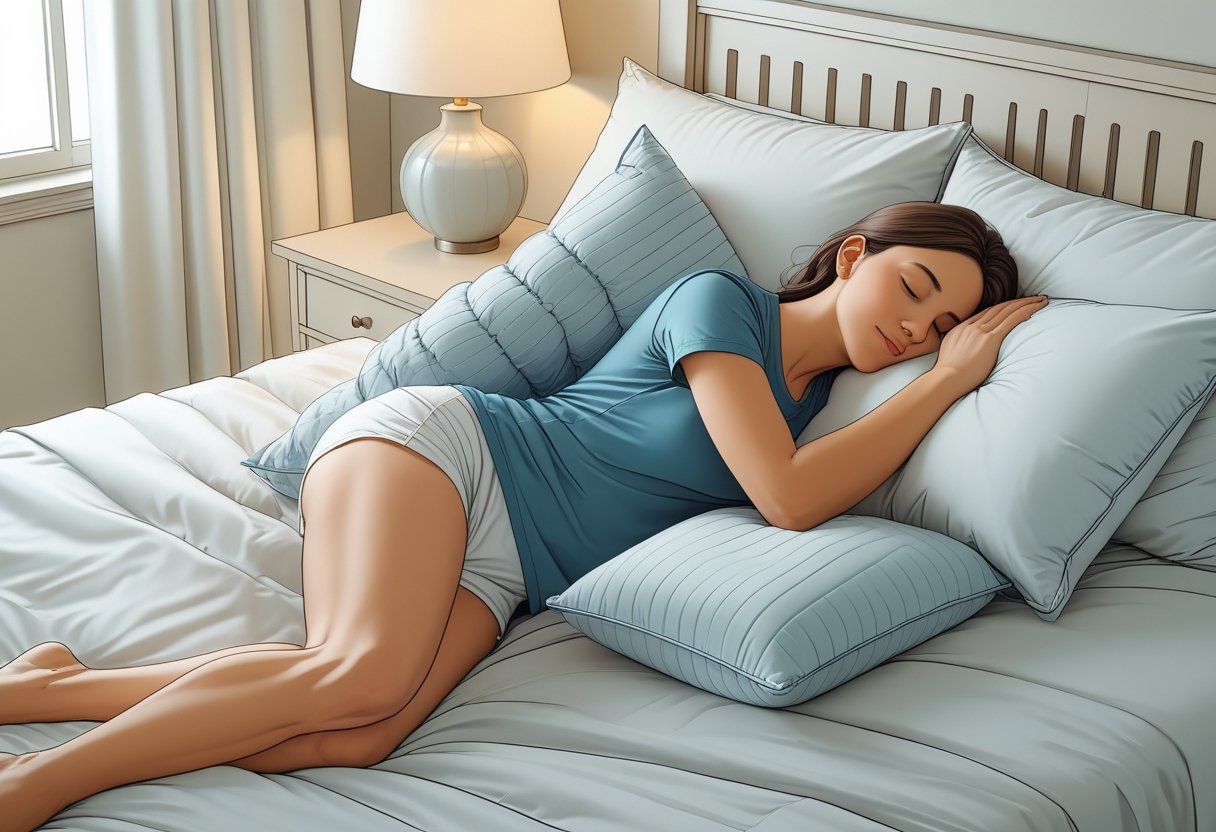
Specific Strategies for Severe or Thrombosed Hemorrhoids
Severe or thrombosed hemorrhoids need gentle management to alleviate pain at night. Selecting the optimal position and making minor modifications can relieve pressure on the region. Focused relief techniques, optimal positioning, and comfort devices are crucial to alleviating symptoms overnight.
Modifications for Thrombosed Hemorrhoid Pain
Thrombosed hemorrhoids create painful blood clots that are very uncomfortable while lying down. Side sleeping is generally recommended as a way to take pressure off. It maintains weight away from the anal region and reduces pain.
Placing a pillow between the knees can improve alignment and ease lower back tension. Sleeping on the stomach is also an option. It removes direct pressure on the hemorrhoid but requires placing a pillow under the hips to avoid rolling onto the back.
Having a donut pillow to use helps suspend the area that is affected, minimizing contact with the bed. Over-the-counter pain relief medication such as ibuprofen before going to bed minimizes pain and inflammation, facilitating easier sleep. Sitz baths prior to bedtime also calm muscles and minimize swelling.
External Hemorrhoids: Additional Care in Positioning
External hemorrhoids are more exposed and sensitive, which means positioning becomes important at night. Do not lie flat on the back, as the pressure and pain in the anal region are heightened. Side sleeping on the least affected side minimizes discomfort. Loose, airy clothing avoids rubbing and irritation while sleeping. Using soft, supportive hemorrhoid cushions can keep the area stress-free.
Pre-sleep hygiene is vital. Gentle cleaning with warm water or fragrance-free wipes minimizes irritation that increases pain. Moisture management with breathable materials or cotton underwear facilitates healing and comfort.
Sleep Position Adjustments During Fissure
Hemorrhoid fissures result in sudden stinging pain on defecation and complicate sleeping. Coordination of position adjustments is important in minimizing pressure and swelling.
Sleeping on the side, particularly the left side, reduces strain on the anal canal. Raising the hips slightly using a small pillow redistributes weight away from the painful area. Avoid tight bedding or anything that pushes against the rectum. Keep up a warm sitz bath ritual before bedtime to relax anal sphincter muscles and circulate blood.
Blending changes in position with soft attire and creams of local pain relief can enhance comfort and facilitate improved sleep with fissures.

Practical Tips to Maximize Comfort at Night
Hemorrhoid sleeping can be painful, but minor adjustments in the sleeping arrangements and bedtime habits can cut down on pain and pressure. The use of the proper mattress and pillows, supportive accessories, and dress clothes each contribute to better quality sleep.
Selecting the Correct Mattress and Pillows
A firm, yet yielding mattress relieves pressure on the anal and pelvic regions while sleeping. Medium-firm mattresses tend to be the best, as they offer sufficient support without the addition of extra pressure.
The strategic use of pillows enhances comfort. Positioning a pillow between the hips when sleeping on the stomach decreases anorectal pressure. In side sleepers, placing a pillow between the knees keeps hips aligned and decreases strain on the pelvic floor.
Raising the legs a bit with a pillow helps decrease blood pooling in the anal veins. Sleeping on a hard surface or on a very firm mattress should be avoided since that increases discomfort and aggravates hemorrhoid pain.
Employing Donut Cushions and Supportive Accessories
Donut cushions are pressure-relieving when seated by allowing for the creation of a void that does not touch inflamed hemorrhoids directly. Donut cushions are particularly useful before bedtime if an individual is sitting down for long periods of time during the day. Inflatable or foam wedges can be used in bed to maintain hips in an elevated position or provide side-sleeping support. These devices decrease pressure upon swelling in veins and aid in enhanced blood flow.
A sitz bath at night usually follows these instruments by calming down the inflamed area with warm water. This conditions the body for sleep and alleviates nighttime pain.
Best Clothing and Nighttime Hygiene
Selecting loose, comfortable clothing from cotton or natural fibers keeps the anal region dry and cool. Tight pajamas or undergarments may retain moisture and further irritate hemorrhoids. Opt for cotton clothes that breathe and do not retain sweat or heat. Wearing nightly clean and dry sleepwear aids comfort and accelerates healing by reducing friction and inflammation.
Gently wash the anal area after bowels and at bedtime. Do not rub but rather pat with a soft towel to avoid irritation. Cleansing lessens itching and discomfort during the night.
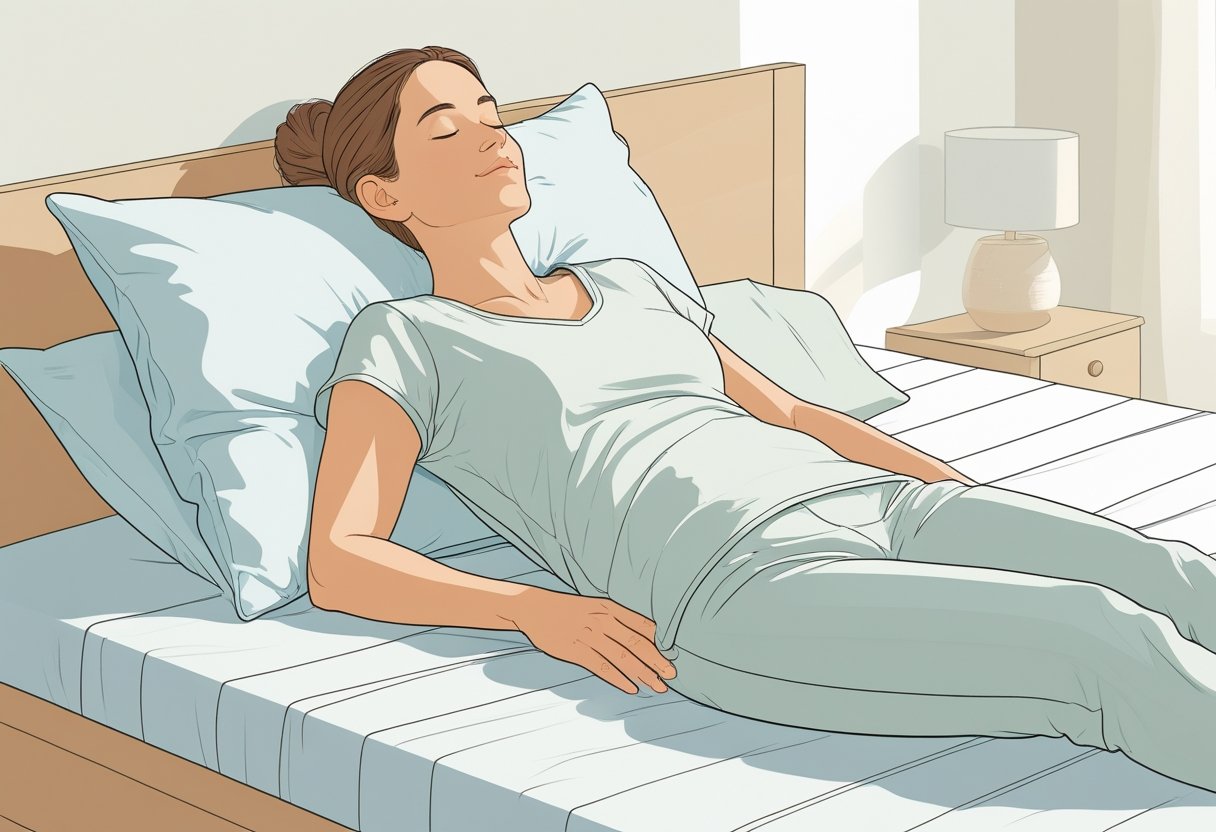
Lifestyle Adjustments and Prevention for Better Sleep
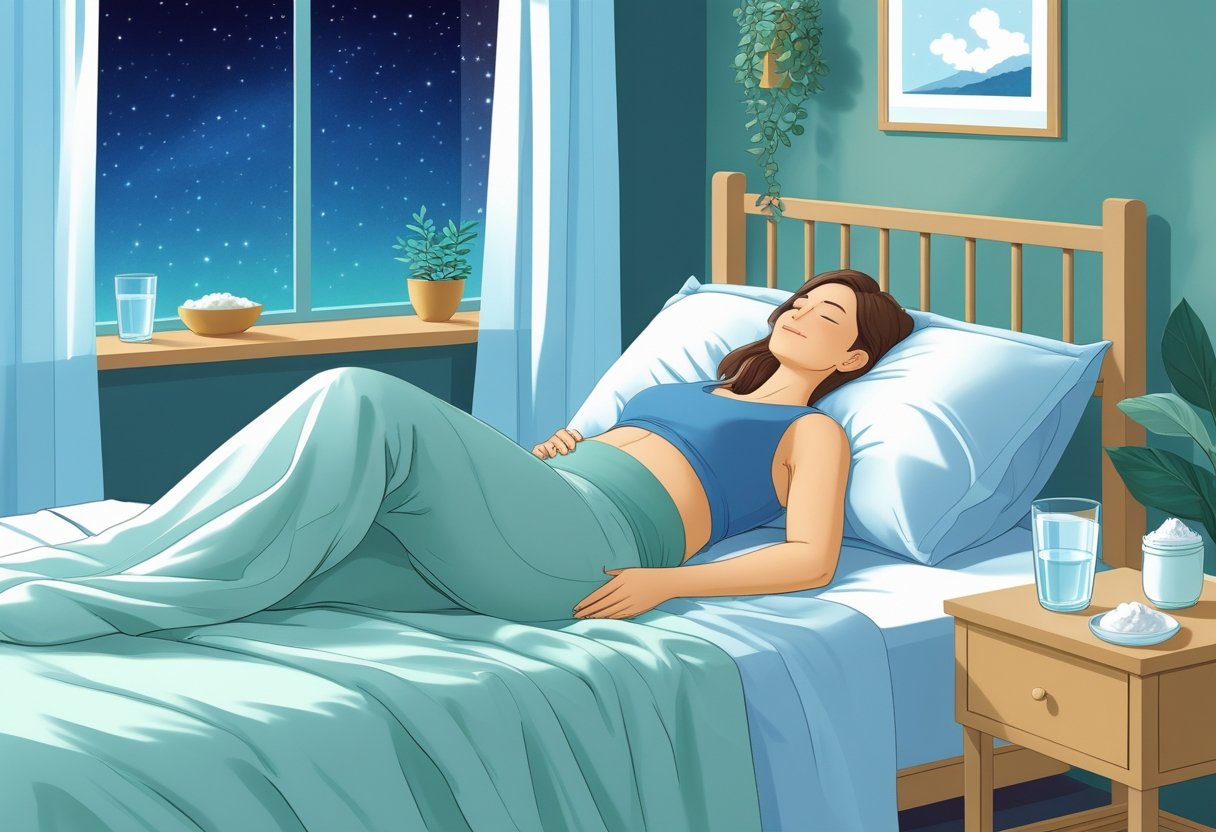
Good rest with hemorrhoids largely relies on daily routines and not doing things that exacerbate symptoms. Changing diet, fluid intake, and activities of daily living relieves pressure and discomfort. Staying away from irritants that bring about trouble also facilitates improved rest.
Diet and Hydration Before Bedtime
Eating fiber-rich foods helps keep stools soft and reduces straining during bowel movements, which is crucial for hemorrhoid relief. Foods like fruits, vegetables, whole grains, and legumes are good choices.
Staying hydrated is important for smooth digestion. Drinking enough water during the day makes stools easier to pass. However, it is best to reduce fluid intake close to bedtime to avoid waking up at night for bathroom trips.
Stay away from heavy or spicy meals prior to sleep, as they can exacerbate hemorrhoid inflammation or interfere with sleep. Caffeine and alcohol consumption also needs to be minimized since they will dehydrate and inflame tissues, leading to discomfort.
Daytime Practices That Facilitate Nighttime Comfort
Leaning or standing for extended hours tends to put pressure on the rectal veins. Going for regular breaks to walk or stretch enhances blood circulation and reduces swelling. Moderate physical activity such as walking or relaxed yoga promotes healthy blood flow. It also prevents constipation, which is an irritant cause of hemorrhoid flare-ups.
Lying down will not hurt but must be mixed with activity. Bed rest that is prolonged can lead to stiffness or pressure accumulation, so changing positions and being active throughout the day aids in recovery. Relaxation methods such as deep breathing or meditation can reduce the sensation of pain and enhance sleep quality.
Staying Away from Triggers That Make Hemorrhoids Worse
Compression clothing and non-cotton fabrics have the potential to trap moisture and cause friction, exacerbating hemorrhoid pain. Loose, cotton clothing can keep the area dry and comfortable. Strong soap or aggressive wiping can be avoided to avoid causing irritation. Gently clean with unscented wipes or warm water.
Sitting on firm surfaces continues to add pressure to hemorrhoids. Sitting on soft cushions or donut pillows can help ease discomfort if prolonged sitting is inevitable. Sleeping flat on the back without assistance continues to add pressure to the lower half. Raising the hips slightly with pillows while sleeping or resting decreases blood flow to the area, which minimizes swelling and pain.
These targeted lifestyle modifications can alleviate symptoms and ensure improved sleep in individuals with hemorrhoids.
When to Seek Professional Advice for Hemorrhoid-Related Sleep Issues
Understanding when symptoms need professional attention can avoid complications and enhance the quality of sleep. Monitoring warning signs and knowledge of medical treatment options assist in guiding appropriate action at the right time.
Red Flags at Night
Some red flags at night indicate a demand for medical assessment. Hemorrhoid bleeding that is persistent or heavy is a crucial warning sign. Red blood on toilet paper or even in stool must not be dismissed.
Severe pain that is not alleviated by over-the-counter measures also needs to be addressed. Pain that results in wakefulness during the night or prevents a person from falling asleep may signal complications such as thrombosed hemorrhoids. Recurring itching or irritation that gets worse at night and creates skin damage is also a warning sign. Finally, signs of fever or swelling around the anus may indicate infection, which must be treated urgently.
Medical Treatments and Interventions
When home care is not enough, a physician is able to provide more potent treatment. Prescription ointments that contain corticosteroids can alleviate inflammation and itching. For severe pain, short-term use of more potent pain medications may be advised. Sitz baths that healthcare providers prescribe can ease the area at bedtime.
In chronic or severe situations, procedures such as rubber band ligation or surgery may be required. A professional can evaluate the severity of the condition and adapt treatment to ensure greater comfort and healing.
Best Sleeping Positions and Surfaces for Hemorrhoid Relief
Side sleeping is one of the best positions to alleviate hemorrhoids. Side sleeping removes direct pressure on the anal region. The left side is often preferred as it may promote blood flow and reduce swelling. A soft fetal position may also be beneficial by alleviating pressure on the anus. Being curled slightly maintains pressure away from tender areas and reduces irritation.
Sleeping on the back is helpful if the hips are lifted onto a pillow. This elevates the pelvic region to reduce swelling and improve circulation. A pillow under the knees can reduce pressure on the lower back and enhance comfort. Stomach sleeping is not advisable. This puts direct pressure on hemorrhoids, which will increase pain and irritation.
A supportive but cushioned mattress is most ideal. A too-soft mattress will cause the body to sink, applying pressure on the pelvic area. The Bear Elite Hybrid balances responsive support with a high-level top layer of plush, providing well-balanced pressure relief and spinal alignment that can bring more ease to side and back sleeping.
The Bear Elite Hybrid has cool gel foam as well as individually wrapped coils that conform to the shape of the body. This not only minimizes pressure points but also maintains the sleeping surface temperature in balance, avoiding overheating that will exacerbate pain. Its longevity and motion isolation make it a good option for those who want relief as well as continuous support night after night.
Sleep comfort tips:
- Sleep on a wedge pillow to lift hips or legs
- Sleep with knees slightly bent to alleviate pressure
- Wear loose, vented clothing to reduce irritation
Changing sleep surfaces and sleeping positions will decrease pain and improve rest in patients with hemorrhoids.
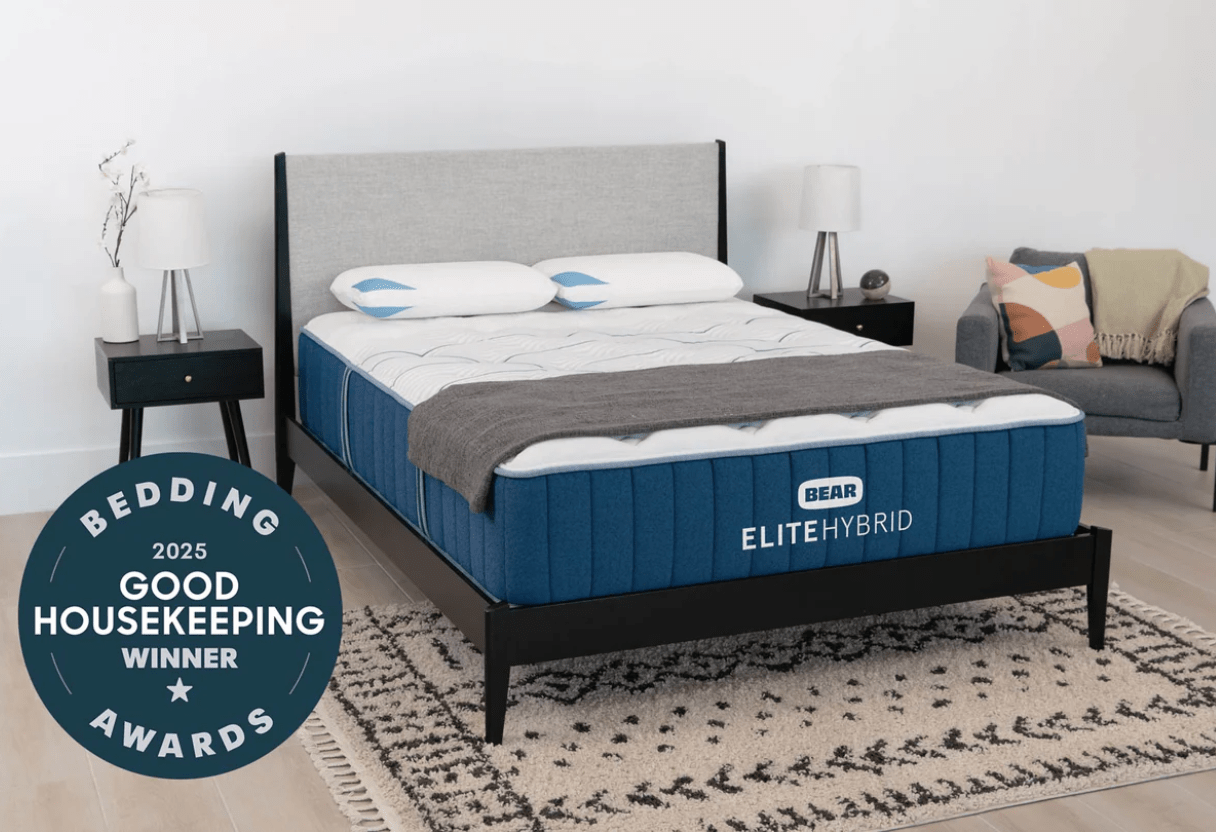
Frequently Asked Questions
Correct sleeping positions, elevation of the body, and pain relief strategies minimize hemorrhoid pain during sleep. Bowel management and support cushions also enhance sleep quality. Pregnant women will have specific adjustments to relieve symptoms during sleep.

